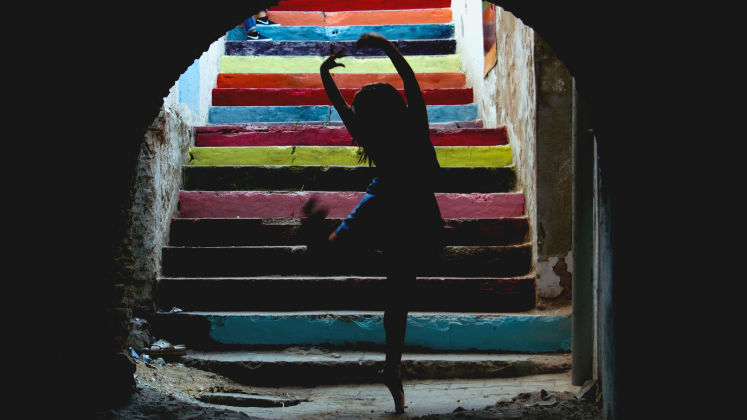In Skateboarding in Seoul: A Sensory Ethnography — available open access — Sander Hölgens immerses body, board and camera lens in Seoul’s skateboarding scene to explore local variants of the ethos of authenticity that shapes skateboarding as a global subculture. While the book could situate itself more within broader academic research on skateboarding in different contexts, it is nonetheless full of fascinating and lovingly researched content, writes Duncan McDuie-Ra.
Skateboarding in Seoul: A Sensory Ethnography. Sander Hölgens. University of Groningen Press. 2021.
 For most skateboarders, even at the professional level, the draw of skateboarding is being able to live in joyous delinquency for as long as possible. Skateboarding’s ethos of authenticity is a counterbalance to cyclical periods of popularity — such as its inclusion in the 2020 Olympic Games — and periods of disinterest — when corporations and mainstream culture desert skateboarding. To put it another way, the subculture, not the sport, is the core. Skateboarding in Seoul: A Sensory Ethnography reminds us that skateboarding is a global subculture.
For most skateboarders, even at the professional level, the draw of skateboarding is being able to live in joyous delinquency for as long as possible. Skateboarding’s ethos of authenticity is a counterbalance to cyclical periods of popularity — such as its inclusion in the 2020 Olympic Games — and periods of disinterest — when corporations and mainstream culture desert skateboarding. To put it another way, the subculture, not the sport, is the core. Skateboarding in Seoul: A Sensory Ethnography reminds us that skateboarding is a global subculture.
Author Sander Hölsgens immerses body, board and camera lens in Seoul’s skateboarding scene and its global connections to deliver rich insights into the local variants of this ethos of authenticity. Immersion is common in skateboarding research as the bodily and sensory experiences, semiotics within and across spoken languages and ways of gazing at the urban landscape to identify objects and surfaces of desire are difficult to comprehend without participation during research and, in many cases, in years prior. Hölgens participates in the Seoul skate scene as a skater, researcher, but also as a filmmaker and as a collaborator with a local skate brand affording unique experiences and encounters.
South Korea is a liminal node in skateboarding’s global subcultural cartography. It is neither part of the cultural core — though it is moving closer as Hölgens demonstrates in this book — nor is it a peripheral space where skateboarding is in its infancy and where spots to skate, equipment and instruction are scarce. Indeed, Hölgens suggests that skateboarding in Seoul is characterised by abundance: of skate shops, skate equipment (to ride and to film/photograph), skateparks and skate spots throughout the ‘city of pristine surfaces and polished granite’ (9).

Image Credit: Photo by Erik Hansman on Unsplash
Skateboarders in Seoul navigate tensions between skateboarding as escape, the chance to recast oneself as an outsider, and skateboarding as a planned activity in planned space, the city’s numerous skateparks. Hölgens’s explorations of these tensions are the strongest contributions of the book. Many of the skateboarders featured in the work seek escape (talchul) from parental and social pressures (Hell-Joseon) through skateboarding, ‘proposing marble instead of hell’ (15).
Most fascinating is that the skaters resist both the pressures of state/society/family and the common ways that young and not-so-young Koreans cope with these pressures. Hölsgens writes that, sharing a conversation with one of the local skaters, ‘skaters perform a subtle critique of Hell-Joseon by valuing their well-being, by resisting socio-political pressures that would limit their life, by taking care of one another, such that there is an escape from societal misconduct and pressures’ (53).
The unexpected flipside of individuality, independence and expression are the ways in which skaters in Seoul enact these desires in the skatepark rather than the streets. In other nodes of skateboarding, especially the US, Europe and Australia, skateparks are seen as vital yet inauthentic spaces for street skateboarding. They are legitimate training grounds and meeting sites, but street skateboarding gains legitimacy by being performed and captured (as video or image) where it is not supposed to, activating surveillance, security guards and hostile architecture such as skate-stoppers. Furthermore, it is skateboarding in the streets that reproduces the ethos of the subculture, constantly on the edge of illegality.
In Seoul, skateparks are an extension of the home on the one hand, but also an escape from the familial home on the other. They provide skaters with ‘an idealised conception of what homes can be, through a communing of space […] where one can take a nap or prepare dinner, without having to conform to the set of socio-cultural norms that relate to either decisively public or private life in South Korea’ (58). Hölgens connects this to spatial cultures in South Korea, where public spaces are not only used for what is generally accepted as public behaviour but also include meetings, cooking, eating, sleeping and singing, among other activities. Skateparks thus take on a sense of domesticity, care and inclusion that draws skaters of different backgrounds, genders, sexualities and skill levels.
The unexpected challenge for skate brands in Seoul is getting talented skateboarders to take their skills out of the skatepark and to the streets, primarily to produce content with a global resonance. Hölgens explores the ways globally connected skaters, magazines and filmers try to implore skaters to explore the city and find spots, particularly in the magazine Unsung (87-89). There is a disjuncture between the ways a mobile class of global skateboarders sees Seoul, as a city of perfect granite and marble spots that can be visited with filmers and photographers to produce content for sponsors, and the ways many local skaters turn their back on the urban wilds in favour of the certainty of the city’s skateparks.
However, global aesthetics do travel, and Hölgens goes into depth on Korean skate videos, notably Hunger (2016), that emulate the look and feel of classic skate videos from the US and elsewhere, including the use of the VX1000 camera favoured by skate filmers in the 1990s and 2000s. Skate filmers in Seoul draw direct parallels to the look and feel of classic skate videos in the book, and they create a ‘mimetic world, in which the old is made new and lived experiences are undermined, or at least retold, rearticulated, and rigorously choreographed, so as to mimic a glorified idea of what skateboarding ought to look and feel like’ (101). The use of the VX1000 in an urban landscape associated with cutting-edge technology suggests these aesthetic choices ‘construct a tangible affinity between skateboarding in Seoul and the practice elsewhere’ (105).
Skateboarding in Seoul offers fascinating insights into the ways skateboarding travels as a subculture and displays elements of ‘mimesis and alterity’ in different contexts. Overall, however, the book forgoes opportunities for deeper analysis. The main argument of the book is expressed as a series of ambiguities at different points along the way. Thus, we learn that skateboarding in Seoul is ‘both formalised and fragmented, imposed and self-initiated, societal and individual, anti-establishment and middle-class, competitive and revolutionary’ (16); later, ‘situated and universalist, static and on the move, affectionate and rigid, well-outlined and spontaneous’ (106). The idea that skateboarding is multifarious within and between contexts is not exactly a surprise, and indeed readers attracted to a book on skateboarding in Seoul will likely share this starting point.
By the book’s end there is a strong sense of what skateboarding in Seoul is like, but not much on why this scene matters in affirming or challenging the ways we think about skateboarding, subcultural mimesis, class and consumption, or youth more broadly, whether in South Korea, Asia or beyond. This relates to the light-touch treatment of prior academic research on skateboarding in the book. While existing works are mentioned, the book lacks in-depth discussion of how different authors, disciplines and interdisciplinary fields have approached skateboarding in different contexts, the questions they ask, where they direct their focus and the ways their arguments align with — and depart from — this study. An additional chapter would not be too arduous for readers in what is a short book overall. Some risk-taking in the argument and in drawing together the book’s broader significance would bolster Skateboarding in Seoul’s otherwise fascinating and lovingly researched content.
Note: This review gives the views of the author, and not the position of the LSE Review of Books blog, or of the London School of Economics and Political Science.







